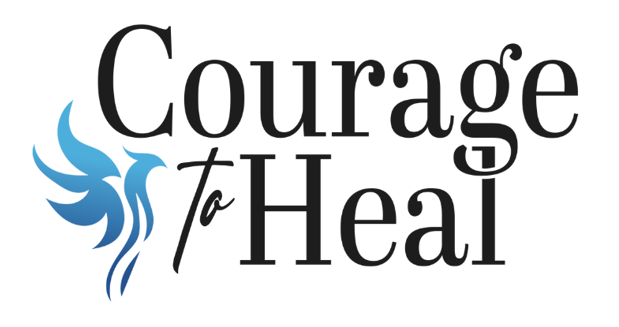
Are you ready to take a breath?
Breathwork is all the rage…
But what in the world is it? “Breathwork” is a broad term that encompasses various breathing techniques and exercises aimed at improving physical, mental, and emotional well-being. These practices involve consciously controlling the breath to influence bodily functions and promote health. Breathwork can be found in many traditions and practices, including yoga, meditation, and certain forms of therapy.
Since ancient times myriad forms of breathwork have emerged independently around the globe via teachings by shamans, martial artists, tribal and religious leaders, including medieval orthodox Russian Christian monks, Hawaiian kahunas, Buddhist meditators, Indian yogis and Chinese Qigong practitioners.
Simply slowing down and taking conscious deep breaths can be considered “breathwork,” same goes for well-known techniques like box breathing, 4-7-8 breathing, and alternate nostril breathing. Some of these breathing practices are thousands of years old! But not all breathwork is created equal…
What Is Neurosomatic Breathwork?
Neurosomatic Breathwork is a powerful type of deep ventilation breathwork coined by Anna Khandrueva of Courage to Heal Therapy. It is a high ventilation breathing practice that involves deep, connected breathing to enhance physical and mental well-being. By focusing on intentional breathing patterns, this breathwork technique can improve oxygenation, reduce stress, and promote overall health.
If we break down the term “Neurosomatic,” “neuro” refers to the brain and nervous system while “somatic” refers to the body. So, this breathing technique affects both your mind and your body.
Neurosomatic Breathwork is similar to other high ventilation techniques, like holotropic, holorenic, rebirthing, conscious connected, and Sudarshan Kriya breathwork practices. What sets it apart is a particular combination of intention setting, connected breathing, evocative music, and post-breathwork meditation and integration. It’s a well-rounded practice designed to maximize the benefits of breathwork.

What Are The Benefits of Neurosomatic Breathwork?
Neurosomatic Breathwork is a profound and powerful practice that can be life-changing when done regularly. While no research has yet been published on this specific technique, other high ventilation practices with similar methods have been studied extensively. In addition, Neurosomatic Breathwork includes a meditation practice, which further enhances the effects of deep breathing. Research on high ventilation breathwork suggests it has many documented health benefits for our physical bodies and emotional states:
Improved Oxygen Utilization and Enhanced Mental Clarity
Deep ventilation breathwork increases the oxygen supply to the body's tissues and organs, improving energy levels and physical performance. Breath holding can improve lung capacity and efficiency, which is beneficial for athletes, singers, and individuals looking to enhance their respiratory function. Regular practice helps the body become more efficient at utilizing oxygen, which can enhance physical performance and endurance. It can also improve mental clarity, focus, and cognitive function by increasing oxygen supply to the brain.
Emotional Release and Enhanced Self-Awareness
This style of breathwork can facilitate the release of pent-up emotions and unresolved traumas, allowing individuals to process and integrate these experiences in a safe and controlled environment. Additionally, by accessing non-ordinary states of consciousness, practitioners can gain deeper insights into their subconscious mind, uncovering hidden aspects of their personality and life experiences. This can lead to significant personal transformation, promoting greater self-acceptance, resilience, and emotional maturity.
Stress Reduction and Improved Mental Health
The practice promotes relaxation and reduces stress by activating the parasympathetic nervous system and lowering cortisol (the stress hormone), which helps counteract the body's stress response. Neurosomatic Breathwork can have a cathartic effect, helping to cleanse the mind and body of accumulated stress and tension. It makes for a great weekly practice on Sundays before heading back out into the stressful world!
Improved Mental Health and Reduced PTSD Symptoms
Neurosomatic breathwork can help alleviate symptoms of anxiety, depression, and PTSD by providing a safe space to explore and process underlying psychological issues. There is research showing that participants score lower on depression measures one week after sessions and report their subjective well-being and quality of life to be higher. Anxiety symptoms improve greatly through breathwork (although high ventilation practices are not recommended with panic disorder).
As for PTSD symptoms, there is an interesting case study showing that they were reduced to the point of being in remission after only 8 sessions of breathwork. Interestingly enough, the right kind of breathwork can mimic the effects of psilocybin, the active ingredient in magic mushrooms, which is known to help with symptoms of depression, anxiety, and PTSD. All in all, Neurosomatic Breathwork can be a fantastic addition to therapy or a great stand-alone practice.
Enhanced Creativity
Accessing altered states of consciousness can unlock new creative potentials and inspire fresh ideas, making this practice beneficial for artists, writers, and other creative individuals. This can include a sense of connectedness with the universe, encounters with spiritual entities, and experiences of transcendence. One client recounted that “my Muse descended upon me in the middle of our session… I saw sights and colors that I just had to paint.”
Improved Interpersonal Relationships
By gaining a better understanding of oneself and resolving internal conflicts, individuals can improve their relationships with others, fostering greater empathy, communication, and connection. This is also achieved through promoting emotional balance and reducing stress. Doing Neurosomatic Breathwork together with your partner in a couples session can serve to improve your bond and make for some special quality time.

Is Neurosomatic Breathwork for Everyone?
This style of breathwork may not be right for everyone. People with the following conditions should consult with their doctor before participating in high ventilation breathwork practices:
Cardiovascular disease
Heart attacks, high blood pressure, and angina
Glaucoma or retinal detachment
Recent chest or abdominal injury or surgery
Psychosis
Seizures
Aneurysms
Severe asthma
Pregnancy
What Do I Need to Practice Neurosomatic Breathwork?
Neurosomatic breathwork can be done in-person or virtually, individually or in a group. It should always be done with an experienced facilitator who will guide the participants into intention setting and provide integration activities. As of right now, Courage to Heal Therapy is the only provider of Neurosomatic Breathwork. Here is what you need to participate:
Yoga mat
Pillow
Blanket
Eye mask/cover
Water
Chapstick
Journal and pen
For virtual sessions: headphones or earbuds for best sound quality
Optional: extra pillow/blanket for under the knees
Wear loose, comfortable clothes
Don’t eat a heavy meal beforehand
Abstain from alcohol and other mind-altering substances
Where Can I Participate in Neurosomatic Breathwork?
You can contact us to set up an in-person or virtual individual session at your convenience. You can also check out our Events page for upcoming group sessions. The fee for an individual session is $100. Group sessions are offered on a regular basis in the Denver metro area for $30 per person. You can follow Courage to Heal Therapy on Eventbrite to be notified of any new events.

